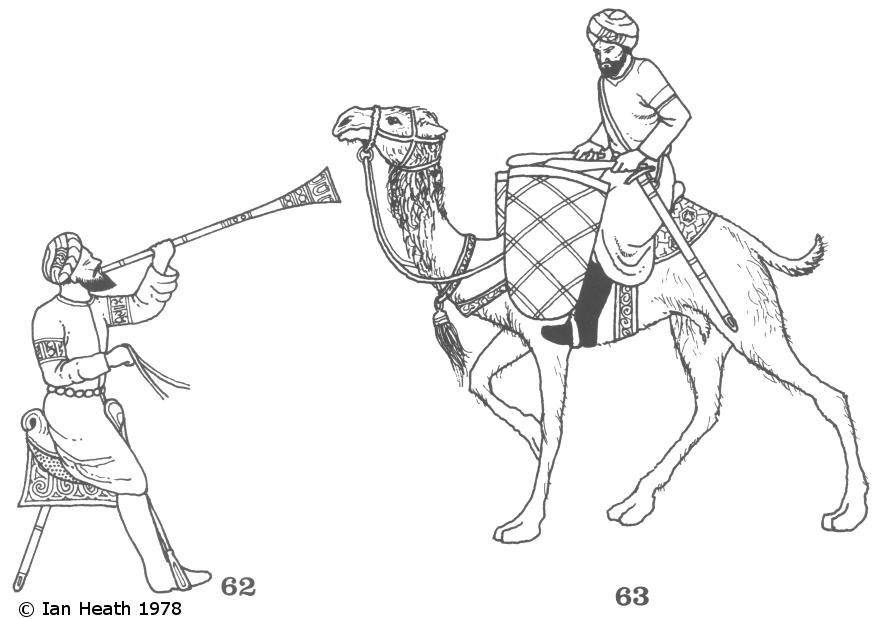MOSLEM MUSICIANS
An extract from Armies and Enemies of the Crusades 1096-1291by Ian Heath
 |
| [Based on Hariri's Maqamat, f19r of the 1237AD copy and on Hariri's Maqamat, f94v of the 1237AD copy] |
Seljuks in Ayyuqi's Varka wa Gulshah f38/36b
Ilkhanids in Kitāb-i-Samak 'Iyār by Ibn Abī al-Qāsim Shīrāzī, Ṣadaqah, f039b
Jalayrids or Turks in 'King Minuchihr of Iran kills the fleeing Turanians'
